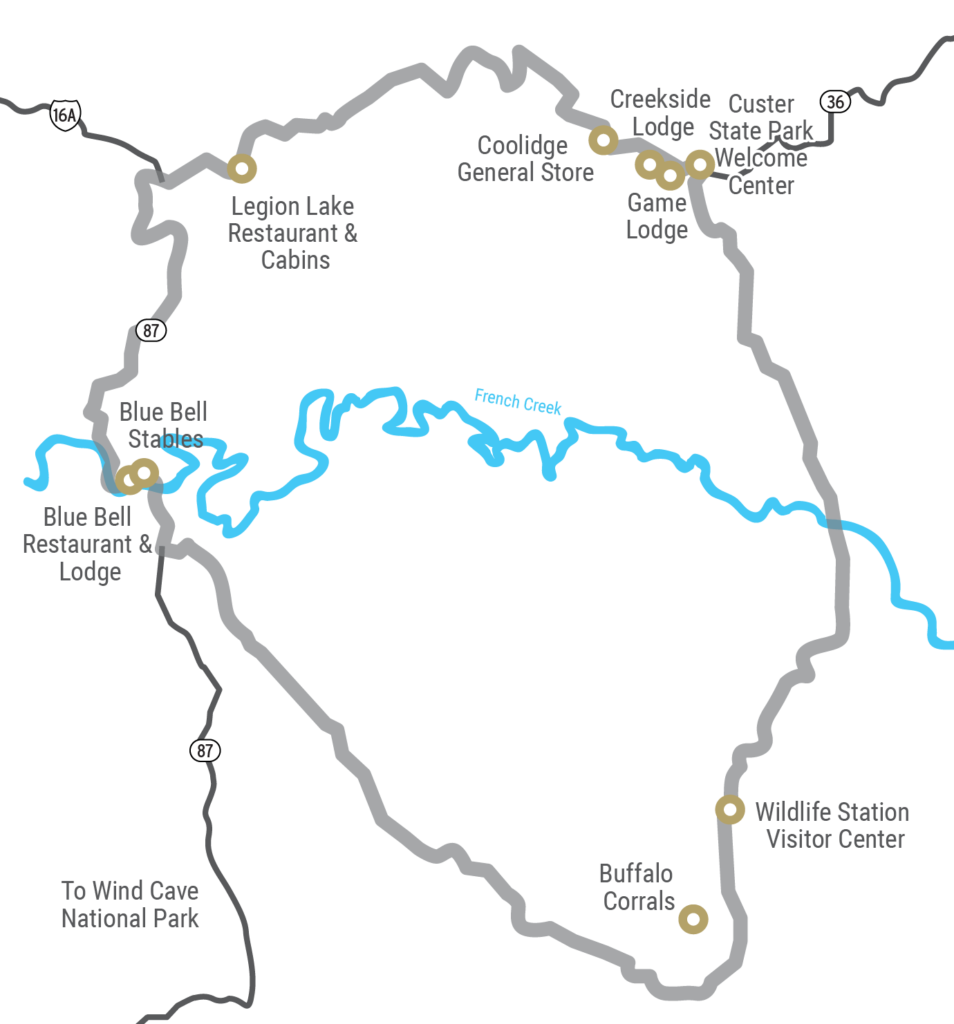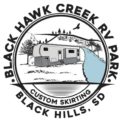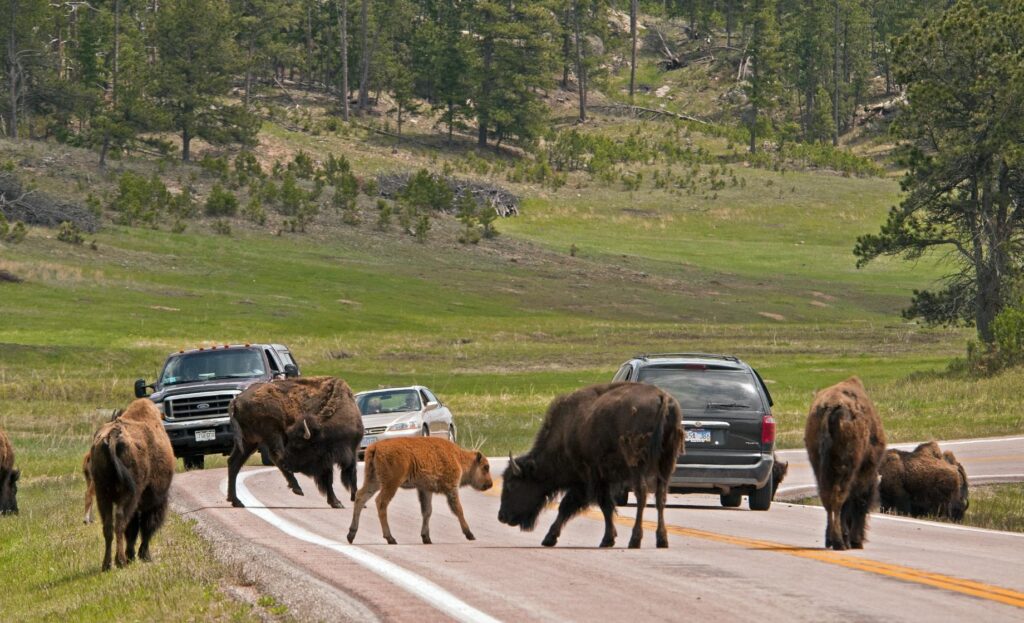Table of contents
Embark on an unforgettable journey through the stunning Custer State Park Wildlife Loop, nestled in the Black Hills. This 71,000-acre park boasts diverse landscapes and abundant wildlife, making it a must-visit destination for nature enthusiasts. Explore prairies, grasslands, mountains, and granite cliffs while encountering over 12 species of animals along the scenic Wildlife Loop road map. Discover the beauty and wildlife of Custer State Park in South Dakota!
Custer State Park Wildlife Loop Cost
When planning your visit to the Custer State Park Wildlife Loop, be aware that there is a $20 entrance fee per vehicle, allowing access to the entire park, including the Wildlife Loop. This fee is the only cost associated with exploring this remarkable area. Visitors can enjoy unlimited scenic drives and wildlife encounters within Custer State Park for the duration of their visit with this single fee.
Where Does It Start and End?
The Custer State Park Wildlife Loop starts and ends at the intersection of US Highway 16A and SD Highway 87 (Needles Highway), see this road map for reference. You can access the loop from multiple points along these highways. The loop is a scenic drive that takes you through the heart of Custer State Park, showcasing its diverse landscapes and abundant wildlife. Visitors can start the loop from various entry points, including the Wildlife Station Visitor Center on Wildlife Loop Road or from the east entrance near the Blue Bell Lodge. Keep in mind that the loop is a one-way road that guides you through the park’s wildlife-rich areas before returning you to your starting point.

How Long Is the Wildlife Loop?
The Custer State Park Wildlife Loop is approximately 18 miles long, forming a scenic route through the heart of the park’s diverse landscapes. The drive typically takes around 1-2 hours to complete, depending on traffic and how often you stop to admire the wildlife and scenery along the way. Plan for additional time if you intend to explore any side roads or take breaks at designated viewpoints to fully appreciate the natural beauty and wildlife encounters that the loop offers.
When Is the Best Time to Go?
The best time to experience the Custer State Park Wildlife Loop is during the spring and fall seasons. In spring, typically from April to June, you’ll encounter lush greenery, wildflowers, and newborn wildlife like bison calves and pronghorn fawns. Fall, from September to October, showcases vibrant foliage colors and active wildlife preparing for winter.
For the best wildlife viewing opportunities, early mornings and late afternoons are ideal. Animals are more active during these times, especially during the cooler hours of the day. Additionally, mornings offer soft lighting conditions that enhance the beauty of the landscape and wildlife encounters.
Things to See in the Wildlife Loop
Wildlife
Bison

- Bison, often called American buffalo, are iconic symbols of the American West. They are massive mammals characterized by their shaggy brown coats, impressive horns, and humped shoulders. Bison are herbivores and graze on grasses, sedges, and shrubs. Here are some interesting facts about bison:
- Bison can weigh up to 2,000 pounds and stand over six feet tall at the shoulder.
- They can run at speeds of up to 35 miles per hour.
- Bison once roamed North America in the millions but were nearly driven to extinction by the late 1800s. Conservation efforts have helped restore their populations.
Bighorn Sheep

- Bighorn sheep are majestic animals known for their impressive curved horns. They inhabit rugged mountainous areas and are well-adapted to climbing steep terrain. Here are some interesting facts about bighorn sheep:
- Bighorn sheep have excellent vision, which helps them navigate rocky cliffs.
- Rams (males) use their horns to establish dominance during mating season.
- Their diet consists of grasses, sedges, and shrubs found in mountainous regions.
Pronghorn Antelope

- Pronghorn antelope are agile and swift animals native to North America. They are not true antelopes but are often referred to as such due to their similar appearance. Here are some interesting facts about pronghorn antelope:
- Pronghorn are the fastest land animals in North America, capable of sprinting at speeds of up to 55 miles per hour.
- They have distinctive white markings on their faces and necks.
- Pronghorn have excellent vision, which helps them detect predators over long distances.
Begging Burros

- Begging burros are domesticated donkeys that roam freely near the Wildlife Loop Road, often approaching vehicles in search of food. Here are some interesting facts about begging burros:
- They are descendants of miners’ pack animals from the late 1800s.
- Begging burros are friendly and accustomed to interacting with visitors.
- Feeding begging burros is discouraged to prevent health issues and maintain their natural behaviors.
Prairie Dogs

- Prairie dogs are small, burrowing rodents that live in extensive underground tunnel systems called “towns.” They are highly social animals and communicate through a variety of vocalizations.
- Prairie dogs are important prey species for many predators, including raptors and carnivorous mammals.
- They play a vital role in shaping the prairie ecosystem by aerating the soil and providing food for other animals.
- Prairie dogs exhibit complex behaviors and have distinct calls to alert their colonies of approaching threats.
Landscape
The Custer State Park Wildlife Loop not only offers incredible wildlife viewing opportunities but also showcases a diverse range of stunning landscapes. As you drive along this scenic route, you’ll encounter various natural attractions that highlight the beauty of the Black Hills region. Here are some notable landscape features to explore:
- Prairies: The Wildlife Loop traverses expansive prairies dotted with native grasses and wildflowers. These open grasslands provide habitat for grazing animals like bison and pronghorn antelope.
- Mountains: As you venture deeper into the loop, you’ll encounter majestic mountains rising in the distance. The Black Hills are characterized by granite peaks and rocky outcrops, adding a dramatic backdrop to the scenery.
- Granite Formations: The Custer State Park area is known for its unique granite formations, including towering spires and rugged cliffs. Keep an eye out for notable rock formations along the route, such as Cathedral Spires.
- Valleys and Canyons: The landscape features picturesque valleys and canyons carved by natural erosion processes over millions of years. These geological formations offer breathtaking vistas and opportunities for exploration.
- Lakes and Streams: Several lakes and streams are scattered throughout Custer State Park, providing scenic spots for picnicking, fishing, and wildlife observation. Sylvan Lake and Legion Lake are popular stops along the Wildlife Loop.
- Forest Areas: Portions of the loop pass through dense pine forests, offering a refreshing contrast to the open prairies and rocky terrain. Take a moment to appreciate the tranquility of these forested sections.
- Wildflower Meadows: Depending on the season, you may encounter vibrant wildflower meadows lining the roadside. Spring and early summer bring colorful displays of lupine, coneflowers, and Indian paintbrush.

5 Tips to Visit the Wildlife Loop
Exploring the Custer State Park Wildlife Loop is an exciting adventure filled with wildlife encounters and stunning landscapes. To make the most of your experience, here are five essential tips to enhance your visit:
1. Bring Binoculars
The Wildlife Loop is teeming with wildlife, including bison, bighorn sheep, and pronghorn antelope. Binoculars will allow you to observe these animals up close without disturbing them, enhancing your wildlife viewing experience.
2. Gas Up
Ensure your vehicle has a full tank of gas before embarking on the Wildlife Loop. This scenic drive can take a couple of hours to complete, and gas stations may be limited within Custer State Park. Having ample fuel ensures you can explore the loop comfortably.
3. Explore the Side Roads
Don’t hesitate to venture onto the side roads branching off from the main Wildlife Loop. These routes often lead to hidden gems and lesser-known viewpoints. Keep an eye out for signs indicating points of interest along the way.
4. Bring Carrots
One of the highlights of the Wildlife Loop is encountering the friendly Begging Burros. These curious creatures may approach your vehicle looking for treats. Bringing carrots or other suitable snacks allows you to interact with them safely and enjoyably.
5. Don’t Feed the Bison
While tempting to get a closer look, it’s crucial to refrain from feeding or approaching bison. These majestic animals may appear docile but can be unpredictable and dangerous. Maintain a safe distance and observe them from the safety of your vehicle.
Where to Stay While Visiting the Wildlife Loop
Planning a visit to the Custer State Park Wildlife Loop? Make the most of your trip by staying at Black Hawk Creek RV Park & Cabins, conveniently located just one hour away from Custer State Park. Our park offers a range of accommodations, from spacious RV sites to cozy cabins, ensuring a comfortable and relaxing stay.
Located within proximity to iconic attractions like Mount Rushmore, Crazy Horse, Badlands National Park, Devils Tower, and the historic town of Deadwood, Black Hawk Creek RV Park & Cabins serves as an ideal home base for your South Dakota adventure.
Book your stay with us today and unlock the door to a world of exploration, relaxation, and comfort in the heart of South Dakota. Experience the beauty of nature and discover the rich history and attractions that this picturesque region has to offer.

